“That guy’s a terrible writer,” posts a reader on a photography forum, garnering numerous likes and +1’s. “His photos are just random snapshots with no context,” states another on a different site. “I couldn’t be bothered to read what he wrote, because I’m sure he doesn’t say anything that I haven’t read before,” professes yet another critic — seemingly oblivious to his own deliciously paradoxical condemnation.
These are, of course, all comments written about yours truly.
Online forums are wonderful places for learning all sorts of things about oneself. For example, they taught me I’m not a “real” street photographer because I shoot from afar with a telephoto lens. I’m not sure exactly when my 28mm lens became classified as ‘telephoto,’ nor when ‘afar’ became defined as ‘2 meters’ — though I’ll willingly admit that I’m not a real street photographer… but that’s because there is no such thing.
On numerous occasions, I’ve read that I haven’t a clue how to properly process my photos. But can a total stranger really know how I intended them to look? Frankly, my photos look exactly the way I want them to! A more astute critic would impugn my taste, but it’s always my abilities that come under attack.
My proudest moment came when a highly agitated reader claimed that I’m such a horrible photographer, that my very existence has tarnished the profession and is preventing others from finding photographic employment. How can I not be flattered that someone believes I’m both famous enough and influential enough to ruin an entire industry!
Thanks to my penchant for shooting with Leica rangefinders, one of the most oft-repeated internet condemnations is that I’m not worthy of a Leica. More often than not, the verdict is delivered with the word “sorry” in front, as in “Sorry, but Leica’s are wasted on him.” The word’s inclusion is meant, I’m sure, to soften the verdict and illustrate the benevolence of the adjudicator. But here’s the thing — and this is going to make a lot of people on a lot of forums very happy — I am in complete agreement with this assessment! It’s true, Leica’s are wasted on me. In fact, every camera I’ve ever shot with is wasted on me.
I’ve never owned a camera that wasn’t eminently capable of producing a Pulitzer Prize winning photo. Yet I’ve never won a Pulitzer. All these cameras with all this potential — and here I am squandering them on my own personal enjoyment and dubious aesthetic values. Daido Moriyama photographed his NY ’71 book with a half-frame Olympus camera. It’s a masterpiece. I actually own two Olympus half-frames, yet neither has resulted in a collection anywhere near that calibre. Josef Koudelka’s Chaos shows what one can accomplish with the panoramic format. But two years into my Hasselblad Xpan explorations, I’ve yet to produce a single photo worthy of being a Koudelka outtake. Even today’s trendiest and most popular gear is wasted on me. My Olympus OM-D E-M1? I doubt I’ve used more than 20% of its myriad feature set. Call me “lame,” but I just haven’t gotten around to employing its watercolor art filter yet. Curiously, Leica’s rangefinder cameras are so void of bells & whistles that, in many ways, they’re actually less wasted on me than other cameras — at least I use every feature in my Leica M film bodies. However, I must sheepishly admit to not having yet pushed the “M” button on top of the M246.
So what does this rambling pre-amble have to do with Leica’s new Monochrom camera? Nothing. And everything. Its main purpose is to weed out people who land on this site expecting a blow-by-blow feature assessment. Nothing prevents people from reading something quite as effectively as actual words.
Those who are brave enough to endure the prologue are usually the sort who know (or have now learned) that ULTRAsomething is neither a news site nor a review site. ULTRAsomething is about photography gear the same way that Gilligan’s Island is about survival tactics.
My exploration of this camera is still a work in progress; my opinions are mine and mine alone; and my photos are meant to satisfy myself, and not the demands of an internet audience. In other words, everything I write about Leica’s new Monochrom M (Type 246) camera is but a guidepost — markers that people are free to connect in whatever way most benefits them.
Cents and Sensibility
Another commonly-logged complaint amongst photo forumbulists (yes, I just neologized that word), is that ULTRAsomething’s camera articles are useless. Apparently, this is because the articles never actually tell the reader whether or not to buy the camera, nor if upgrading from some previous model is worth the expense.
 It’s a criticism that falls just short of being justified. Yes, it’s true. But it’s true for a rather valid reason — because to do as asked is impossible! How can I make a recommendation? I have no insight into the individual wants, needs and pecuniary status of my readers. I only have insight into my own. So that’s what I write about.
It’s a criticism that falls just short of being justified. Yes, it’s true. But it’s true for a rather valid reason — because to do as asked is impossible! How can I make a recommendation? I have no insight into the individual wants, needs and pecuniary status of my readers. I only have insight into my own. So that’s what I write about.
Leica’s cameras, in particular, are rather expensive. So I understand the reader’s desire to find some sort of external validation that either supports their decision to purchase one, or justifies their rationale to not. But these are, ultimately, personal questions that only the reader can answer.
I’m often tempted to take the philosopher’s way out, and suggest that very few people actually need a new camera. As I wrote in a reply to a reader’s comment in the previous article, “My 1958 Leica M2 is far better at being a camera than I’ll ever be at being a photographer.” But “need” implies rational thought and intellect — and for me, photography has little to do with either, and everything to do with emotion. Different cameras may ultimately yield similar results, but the impact they have on a photographer’s instincts, methods, motivation and passion can have a profound and real effect on achieving that result.
So add this to the long list of ULTRAsomething articles that fails to state whether a camera is actually worth the expense. Instead, I’ll suggest you can find the answer you seek by simply asking yourself two questions:
- Is this camera going to provide me with a technical, tactile or emotional advantage over a camera I already own?
- If so, then am I willing to give up X, Y and Z in order to gain that advantage?
I can’t possibly answer Question #1 on your behalf. But the remainder of this article will answer it on mine.
Similarly, your X, Y and Z will likely be unique and very specific to you. Obviously, no one should be willing to give up X, Y and Z if X = “food,” Y = “shelter” and Z = “safety and security.” But what if X = “learning to cook, rather than going out to eat?” What if Y = “dumping cable TV and sticking with a 4 year-old smart phone running last years’ operating system?” What if Z = “mending your grandfather’s old hand-me-down zoot suit, rather than purchasing something more fashionable?”
Offense and Sensibility
As stated above, the first question I asked myself — and the question you’ll ultimately need to ask yourself — is “will this camera provide me with a technical, tactile or emotional advantage over a camera I already own?” For me, ergonomics are actually the most important factor when choosing a camera. In my case, that means a rangefinder. However, since I already own several, the fact the M246 is also a rangefinder does not provide it with any immediately apparent ergonomic advantage.
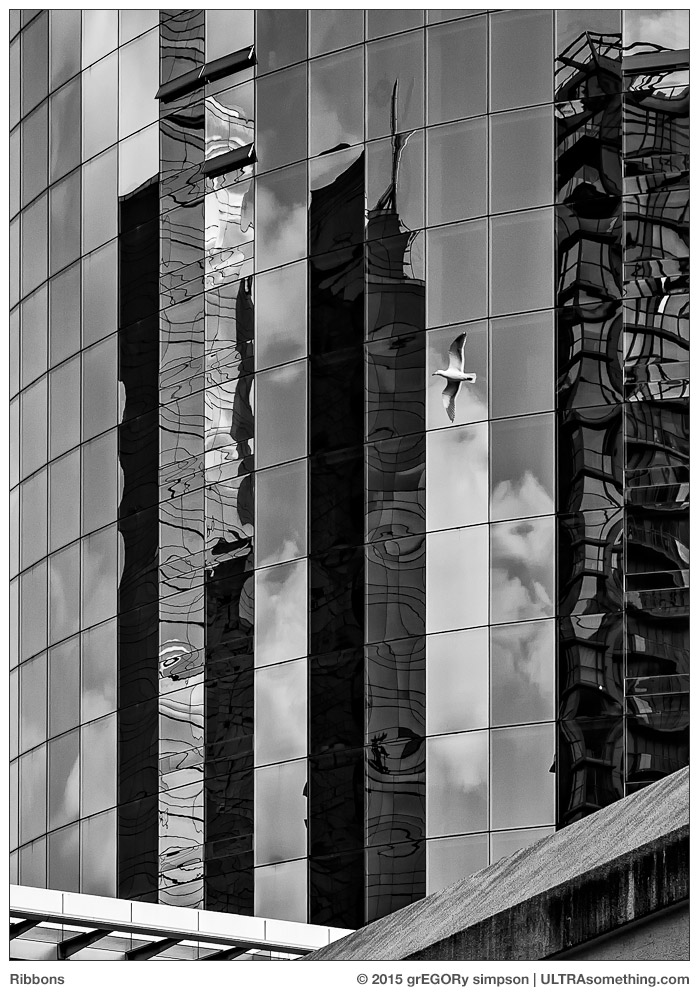 So, instead, I decided to look for advantages within the camera’s image quality capabilities. At first blush, this might seem a strange avenue for me to explore — after all, the appearance of my published photos certainly makes it seem as if I don’t actually care about image quality — and to an extent, that’s true. But it’s true only when discussing the look of my final prints. In reality, I like to capture as much fidelity as possible, because the more I capture, the greater the number of ways I can screw it all up in post-processing.
So, instead, I decided to look for advantages within the camera’s image quality capabilities. At first blush, this might seem a strange avenue for me to explore — after all, the appearance of my published photos certainly makes it seem as if I don’t actually care about image quality — and to an extent, that’s true. But it’s true only when discussing the look of my final prints. In reality, I like to capture as much fidelity as possible, because the more I capture, the greater the number of ways I can screw it all up in post-processing.
As I discussed in Sensors and Sensibility, I have a few quibbles when it comes to using digital cameras for so-called “street” photography. Believe me, this isn’t a “film vs. digital” debate. I like both and I shoot both. In fact, I don’t believe in pitting one format against the other. To me, they are two completely different mediums, with two completely different outcomes. What matters is not “which is better,” but “which is better for my intended purpose?” And for my use on the streets, I prefer to use film because of its exposure latitude, highlight response, and the “forgiving” nature of its less-clinical renderings. So the best thing a new digital camera could do for me is to negate some of that need for film, while providing me with all the inherent advantages that digital offers (workflow, resolution, flexibility).
What I saw from the tests I performed in Sensors and Sensibility is that the M246 has a tremendous amount of usable dynamic range. For my own particular brand of photography, this translates into the following tangible benefits:
- It means I can underexpose a scene (protecting the highlights), yet still have enough clean and meaningful shadow detail to pull up my subject in post processing. The end result won’t necessarily look like film, but it means I’ll be just as likely to “get a usable shot” with a digital camera as I currently do with film.
- It means I can use faster shutter speeds, which will freeze the motion blur that comes from having both a photographer and a subject that are frequently in motion. Using faster shutter speeds means shooting at higher ISO — even in bright sunlight — but with the camera’s stellar low light (shadow) capability, it’s a worthy trade-off.
- It means I can use narrower apertures, which will diminish focus errors caused by scale focusing. Again, narrower apertures mean shooting at higher ISOs than one might normally choose. But once again, the relatively minor increase in shadow noise is more than offset by the benefit of having more photos appear “in focus.”
While I initially only theorized these advantages (based on my controlled tests), I have since employed these techniques in the field. Though it will take a little while for me to adjust my habits to accommodate this wholesale change to balancing ISO, shutter speed and aperture, the theory has definitely been proven.
The M246 will absolutely provide me with more of a technical, tactile and emotional advantage than any camera I already own — because, until now, I’ve never used a digital camera that I’ve found so thoroughly satisfying for “street” work.
Dissents and Sensibility
There is a flip side to the question of whether a camera provides enough of an advantage to warrant consideration: “Does it create any disadvantages that will negate those hard-earned advantages?”
 For some photographers, a black & white sensor might be a disadvantage (particularly if, like me, they’re considering upgrading from a color camera, like the M9). In my case, a monochromatic sensor actually provides a wealth of new advantages — many of which I discussed several years ago in the Fetishist’s Guide to the Monochrom series. 100% of my photography is black & white. This means that the sole advantage of using a color sensor rests in its ability to change relative tonalities after a photo is taken. But for me, this single advantage is more than offset by the Monochrom’s inherent image quality advantages, the workflow improvements for BW photography, and my own psychological need to actually shoot (and not just display) in black & white.
For some photographers, a black & white sensor might be a disadvantage (particularly if, like me, they’re considering upgrading from a color camera, like the M9). In my case, a monochromatic sensor actually provides a wealth of new advantages — many of which I discussed several years ago in the Fetishist’s Guide to the Monochrom series. 100% of my photography is black & white. This means that the sole advantage of using a color sensor rests in its ability to change relative tonalities after a photo is taken. But for me, this single advantage is more than offset by the Monochrom’s inherent image quality advantages, the workflow improvements for BW photography, and my own psychological need to actually shoot (and not just display) in black & white.
Many potential M246 customers are currently engaged in the whole CCD vs. CMOS sensor debate. M8’s, M9’s and the original Monochrom cameras all used CCD sensors. M240 series cameras (including the new Monochrom M246) use CMOS. There’s no doubt that they provide a different rendering, though I find the differences to be more apparent in color images. Like many, I have a slight preference for the appearance of a color file from a CCD that’s been exposed at base ISO. But I’m not shooting color. And I’m not shooting at base ISO. So any minuscule (and totally subjective) advantage of a CCD is ultimately lost on me, where the new M246’s high ISO capabilities (and thus, its shadow detail and dynamic range) tilt the balance totally in favour of its new CMOS sensor.
Another image quality debate that’s currently raging on the internet concerns the fact M246 files are 12-bit, and not 14-bit. I’ll admit, before I started testing the camera, this “issue” worried me a little. Although Leica explained its necessity, and mentioned they could see no real-world disadvantages to the 12-bit files, I had my doubts. So, during the test phase, I set out with every intention to prove Leica wrong. Instead, I proved that I was wrong. I could find no issues with 12-bit files. I could not “break” the images in post-production, like I thought I could. There was not one single shred of evidence in my testing that would make me think that the 12-bit nature of the M246 files constituted a “downgrade.” Perhaps a 14-bit version of this camera (were it possible) would have even greater fidelity — but the 12-bit version that currently exists definitely bests the performance of the previous 14-bit cameras.
Having thus debunked (or dismissed) the currently trending internet-based worries, I do have one actual issue to report. It concerns the way a geometrically alterered image can bring out noise patterns in the shadows. It’s a problem I first reported back in Part 3 of the Fetishist’s Guide to the Monochrom. At the time, I didn’t fret over it too much — it affected only a small percentage of my photos and, when it did, I could spend some extra time and energy minimizing the effect in post-production. Unfortunately, this issue is still present in the new M246.
In brief, this problem is as follows: Monochrom noise is extremely fine. It’s more like a light dusting of static than any sort of de-mosaicing noise or “film grain.” Because of this, even at high ISO values, the shadows appear relatively noiseless. However, if you boost those shadows by a couple of stops, you’ll start to see what looks like a loosely textured “weave” — much like you’d see if you looked closely at a fine wool suit fabric. If you then alter that image geometrically, you’ll begin to see patterns emerge. Even a simple rotation (such as you might perform to level a horizon) will cause a sort of tilted, grid-like pattern to appear in the amplified shadow regions. If you perform any non-linear geometric distortions (such as lens correction or keystone correction), then the shadow noise will display a subtle moire-like effect with undulating lines and waves appearing within the noise. Remember when you learned about magnetism in grade school? You’d sprinkle some iron dust on a paper and the dusting looked totally random. But when you brought a magnet near it, those iron particles would begin to form patterns. That’s exactly what can happen to the amplified shadow noise in a high ISO Monochrom file.
The best way to minimize any pattern is, of course, to avoid doing what causes it to appear: Don’t shoot at high ISO; then don’t add add several stops of exposure to that file’s shadows; then don’t manipulate the heck out of that image’s geometry.” Right — you might as well tell me to give up photography. So the next best way to minimize the patterns is to actually add some irregularity to the shadow noise. If I have a file that I know will be tortured in post-processing, I’ll add some noise to the shadow regions, then export an upsized version of that file from Lightroom. This works much the same way that dithering works in digital audio. Because digital audio is so clean, any time you re-sample it, you end up with audible artifacts that are imprinted on the sound by the processing algorithms. In order to render these artifacts inaudible, noise is added to the file before it’s resampled.
I have no idea if this is what’s happening with Monochrom files, but on the surface it seems that the noise is so fine that it actually enables us to see exactly what sort of pattern-based processing algorithms are being used by our image processing software — algorithms that are supposed to be invisible to the naked eye become visible because there’s not enough noise to mask them. I’ve tested Monochrom files with both Capture One and Lightroom/Camera Raw, and the results are essentially the same.
If my theory is correct, and if the Monochrom continues to grow in popularity, some enterprising developer might be well served by adding an automatic dithering option to their RAW converter — precisely for the purpose of dealing with low-noise, fine-grained files like those produced by the Monochrom. Hopefully, I’ll find some time this month to perform further tests, and seek out the guidance and knowledge of both Leica and various RAW converter developers. If I find out more, I’ll post a follow-up article.
Vents and Sensibility
Though my testing of the new Monochrom M246 uncovered a cornucopia of tangible imaging advantages, I do have a few issues regarding the camera’s ergonomics. Granted, the M246 is still a rangefinder, and a rangefinder is the #1 requirement for my particular style of shooting. But there are a few worrisome trends developing in today’s digital rangefinders — some of which dampen my enthusiasm somewhat.
 I must first begin with a confession: Two years ago, when I first took Leica’s new M (Type 240) for a “test drive,” I had a rather negative response. To say I didn’t like the new body would be an understatement. The 100g of excess weight really annoyed me. The relocated menu button sat directly beneath where my thumb wanted to rest, forcing it over onto the LCD, where its extra thickness cause my wrist to ache. I was completely discombobulated by the fact that, when I brought the camera to my eye, I couldn’t see any frame lines until the camera “woke up,” which felt like an eternity. I suffered separation anxiety over Leica’s decision to remove the frame line select lever, and was even inexplicably annoyed there was no longer a number following the letter “M.” After a single evening spent shooting the M (240), I felt a renewed sense of appreciation for my slimmer (in hand), lighter and “proper” M9.
I must first begin with a confession: Two years ago, when I first took Leica’s new M (Type 240) for a “test drive,” I had a rather negative response. To say I didn’t like the new body would be an understatement. The 100g of excess weight really annoyed me. The relocated menu button sat directly beneath where my thumb wanted to rest, forcing it over onto the LCD, where its extra thickness cause my wrist to ache. I was completely discombobulated by the fact that, when I brought the camera to my eye, I couldn’t see any frame lines until the camera “woke up,” which felt like an eternity. I suffered separation anxiety over Leica’s decision to remove the frame line select lever, and was even inexplicably annoyed there was no longer a number following the letter “M.” After a single evening spent shooting the M (240), I felt a renewed sense of appreciation for my slimmer (in hand), lighter and “proper” M9.
But this only represents half a confession. Because back in 2006, when Leica released the M8, I had a similarly negative response. Though roughly the same weight as a film M, the M8’s extra thickness made the camera feel much heavier and seem far clunkier. Gripping it made my wrist ache. It seemed to take a similar measure of eternity to write a file to the SD card, and I was totally distressed by the thunderous noise that would spring forth from its shutter.
It was 2009 before I finally purchased an M8, deciding that my dislike of digital SLRs was greater than any ergonomic issues I might have had with the M8. Over time, I grew rather accustom to the M8’s extra thickness and, though it still never felt as good in-hand as a film M, I was able to build up enough wrist strength that it no longer hurt to carry it all day. I never did adapt to the shutter sound, which is one of the reasons why I upgraded to the M9 immediately upon its announcement.
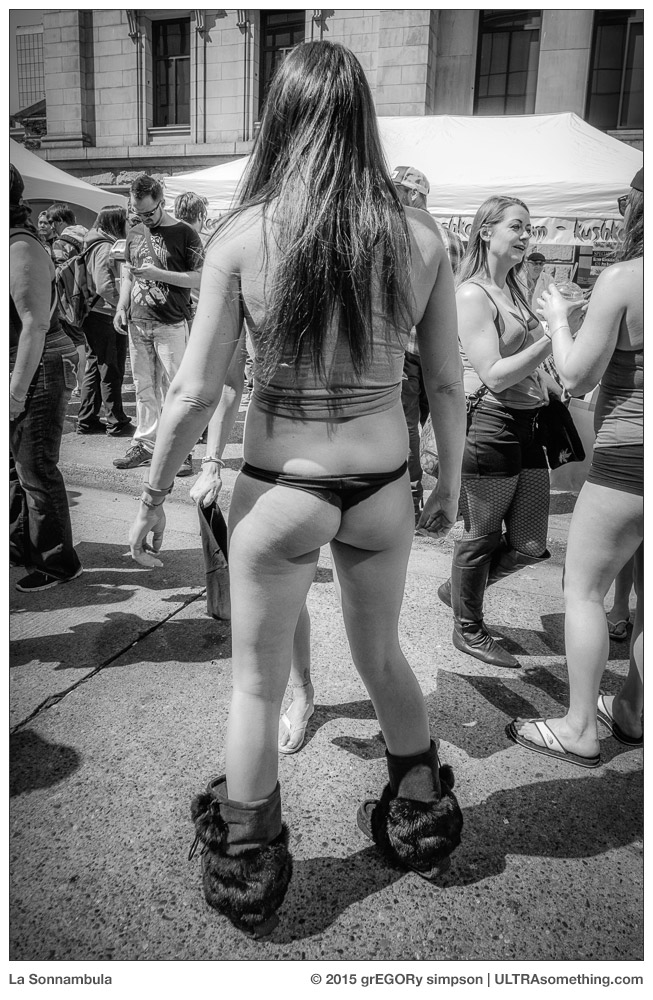 So it’s rather ironic that I immediately dismissed the M240 for failing to match the ergonomics of the M8/M9 when, in fact, I once dismissed that earlier line for its own collection of ergonomic issues. Progress always exacts its price. Fortunately, when the Monochrom M (Type 246) arrived, I was mentally prepared from both my previous M240 experience and from my M8 experience, which taught me that first impressions weren’t always lasting impressions.
So it’s rather ironic that I immediately dismissed the M240 for failing to match the ergonomics of the M8/M9 when, in fact, I once dismissed that earlier line for its own collection of ergonomic issues. Progress always exacts its price. Fortunately, when the Monochrom M (Type 246) arrived, I was mentally prepared from both my previous M240 experience and from my M8 experience, which taught me that first impressions weren’t always lasting impressions.
I’ve been in possession of a prototype M246 for a month now, and I’ve had the opportunity to take it for several dozen walks. In general, I’m still somewhat annoyed by both the weight and ergonomic concerns. When I bought the M8, it was the lightest, most compact high-fidelity digital camera I owned. I never had to choose between my “good” camera and my “portable” camera — they were one and the same. But a lot has changed since then. Today, the 240-series M’s are the heaviest, least compact digital cameras in my (temporary) possession. Now, when I walk out the door, I must once again choose between fidelity (Leica) or portability (any of my other digital cameras).
Fortunately, for the past month, the choice wasn’t mine to make. I had to take the M246 because I had to test it. And the more I tested it, the more I fell in love with it. In the end, I felt about the M246 the way I ultimately felt about the M8 — that my appreciation for what the camera could do (and how it did it) was greater than my dislike for its heavier, more awkward body.
 Thankfully, Leica returned the exiled frameline select lever to the M246. The missing number after the letter “M” (which, admittedly was about as ridiculous an annoyance as has ever been stated) was also rectified, because the M246 has no logo or model demarkations whatsoever. I’m still not totally thrilled with the electronic framelines, but at least they seem to be set for 2m (making framing a bit more WYSYWIG than my M9). Hopefully, now that Leica has put the framelines under battery control, they’ll go the extra step in a future model M and make them expand and contract dynamically with distance. Then, at least, there will be a tangible benefit to waiting for the framelines to “wake up.”
Thankfully, Leica returned the exiled frameline select lever to the M246. The missing number after the letter “M” (which, admittedly was about as ridiculous an annoyance as has ever been stated) was also rectified, because the M246 has no logo or model demarkations whatsoever. I’m still not totally thrilled with the electronic framelines, but at least they seem to be set for 2m (making framing a bit more WYSYWIG than my M9). Hopefully, now that Leica has put the framelines under battery control, they’ll go the extra step in a future model M and make them expand and contract dynamically with distance. Then, at least, there will be a tangible benefit to waiting for the framelines to “wake up.”
My other problem with the 240-type body was (and continues to be) the placement of the Menu button, which is located directly beneath the spot at which my thumb usually grips a camera. This is an issue I have with nearly every modern digital camera, and not just Leica. Customer demand for larger LCDs has reduced the space available for control buttons. So whenever I carry a camera in hand (which is always), those buttons are in the way — forcing my thumb onto the LCD, where the extra thickness makes the camera feel awkward. I’ve taken to using my old first-generation Match Technical Thumbs Up, which I purchased for my M8 back in the day. Although it partially obscures this camera’s thumb dial, it provides an alternate way of carrying the camera — at least until my wrist gets more buff.
One caveat, however, is that when the Thumbs Up is attached, then Leica’s external electronic viewfinder can’t be used. Which segues nicely into the next topic…
Kaizen and Sensibility
Like most every aspect of modern camera design, I have a love/hate relationship with live view cameras. Technically, I’m fine with the whole idea of live view — particularly when it’s offered as an addition to a more traditional ‘optical’ view, which I greatly prefer to use. Any frustrations I do have with live view cameras tend to expand or contract based on their implementation.
In order for live view to be useful for me, it needs to offer two things: focus peaking and an electronic viewfinder. Fortunately, both are present on the M246, but each has caveats. Specifically, the focus peaking works reasonably well, but I find it slightly more difficult to see than on some other camera models. The other necessity — the electronic viewfinder — is available only through purchase of an external contraption. External viewfinders, by nature, are large, clumsy and inelegant. This one also happens to be of only mediocre optical quality.
In spite of my tempered enthusiasm for this camera’s live view implementation, I’m still thrilled to have it. That’s because the M246 is, at heart, a classical rangefinder with a fully optical viewfinder and focus mechanism. Every modern camera manufacture makes a live view camera, but which of them can sell you an honest-to-goodness rangefinder? Just one — Leica. Yet, as much as I need and rely on rangefinders, there are times when it’s not the optimal way to focus. Fast lenses shot wide open? They benefit from live view. Those 90mm and 135mm Leica lenses that go unloved and unmounted for months on end? They have renewed purpose thanks to live view’s ability to easily focus them. Low ambient light? Another prime reason for using live view. The viewing, framing and focusing options on the 240-series are an absolute delight — combining all the benefits of rangefinder cameras with the shot-saving benefits of a focus-peaking live view when you need it. So the presence of live view on a Leica M series camera — even an implementation as middling as this — is the cherry atop the icing on the gravy on the cake.
Suspense and Sensibility
Let’s revisit my first pre-purchase question, “Will the Leica M Monochrom (Type 246) provide me with a technical, tactile or emotional advantage over a camera I already own?”
The answer is absolutely, unequivocally and enthusiastically “yes.” The camera’s technical advantages are leagues above any other camera I own. The emotional benefits of shooting a digital monochromatic camera proved themselves to me back when I first tested the original M9-based Monochrom, and they continue with this camera. The tactile victory is a bit less one-sided: I find the heavier body and electronic framelines somewhat less desirable than what my M9 offers. But these quibbles are more than offset by the benefits of live view, the quieter shutter, the beefier battery and the overall reliability of the M246.
So with Question #1 definitively answered, I have now moved on to question #2: “Am I willing to give up X, Y and Z in order to gain that advantage?”
I am presently in the process of defining exactly what X, Y and Z might mean to me… In the meantime, I’ve still got Leica’s prototype M246 in my possession, and I’m in no hurry to remind them of that fact.
©2015 grEGORy simpson
ABOUT THESE PHOTOS: At the end of most articles, I provide technical details about each of its photos: what camera, which lens, what film and developer. In this case, all the photos are taken with a prototype Leica M Monochrom (Type 246), and thus do not require any film or development data. I could, of course, provide lens information, but frankly I’m sick of writing about gear. I will tell you that all these photos were taken with either a Leica 28mm f/2 Summicron, a Leica 50mm f/2 Summicron APO, my old 1946 thread mount Leica 35mm f/3.5 Elmar or the Voigtlander 21mm f/4 Color Skopar.
Does it matter which lens was used for which photo? I hope not. Because my only intent for the past few weeks was (as I stated at the end of Sensors and Sensibility) “to determine whether or not the M246 is capable of stooping to my level.” Sure, Leica’s new Monochrom is designed for the production of stunning images. But I don’t actually take stunning images and, honestly, I don’t even really like stunning images. So if the camera can only produce such images, it’s of little value to me. Instead, I needed to learn whether or not the M246 could take photos that were unmistakably mine. You know — lo-fidelity, high-cheekiness, dubiously useful snapshots of day-to-day life. Mission Accomplished… and in spades.
REMINDER: If you find these photos enjoyable or the articles beneficial, please consider making a DONATION to this site’s continuing evolution. As you’ve likely realized, ULTRAsomething is not an aggregator site — serious time and effort go into developing the original content contained within these virtual walls.





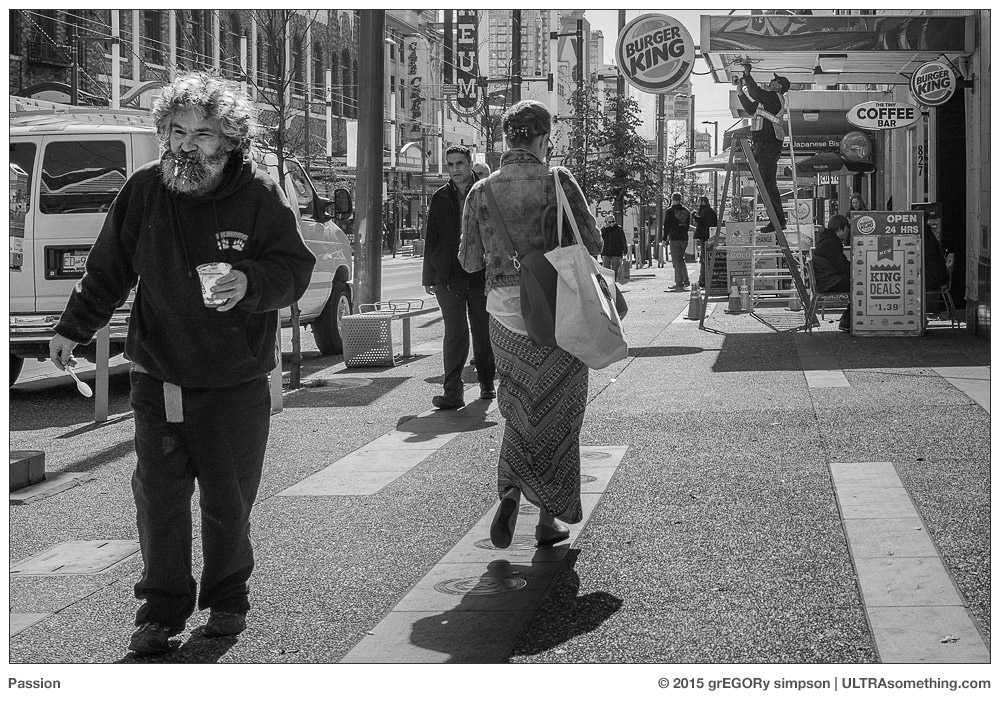
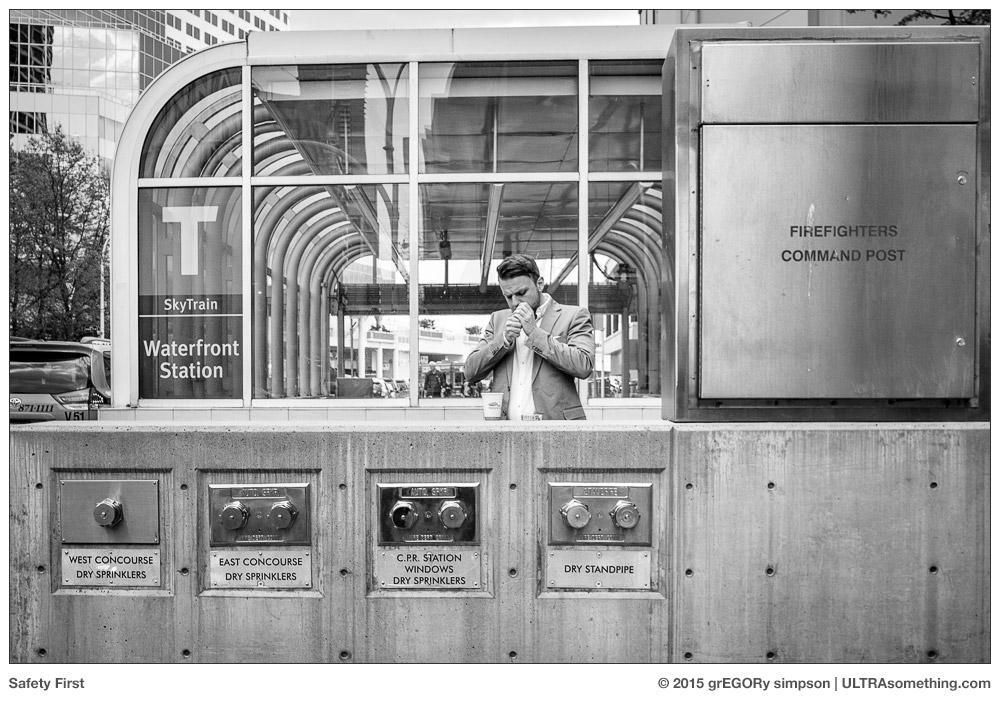
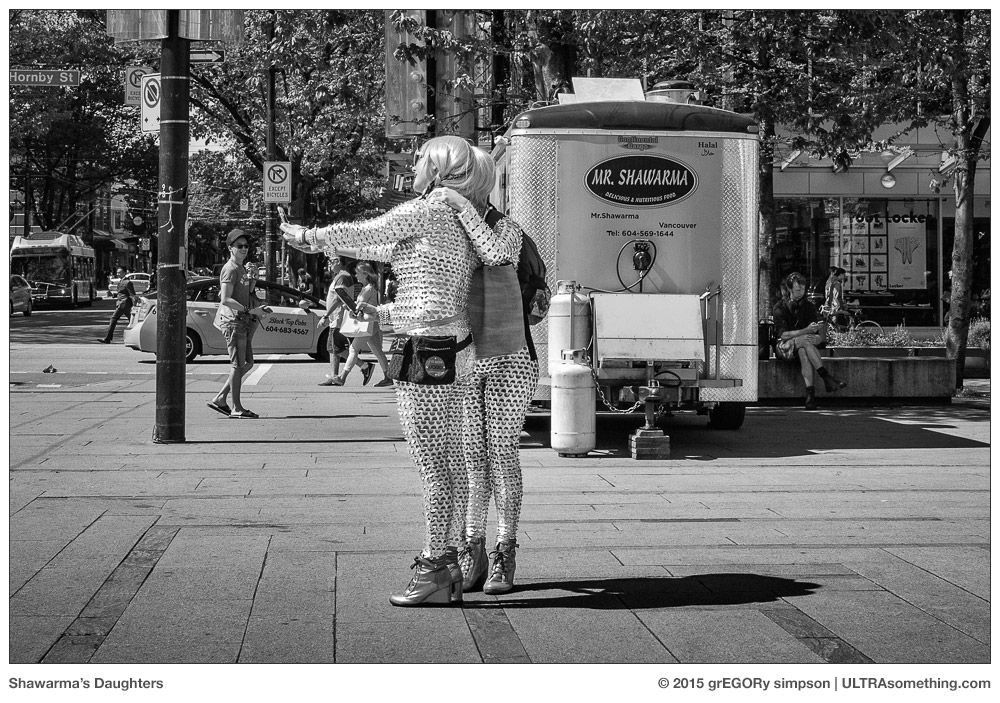

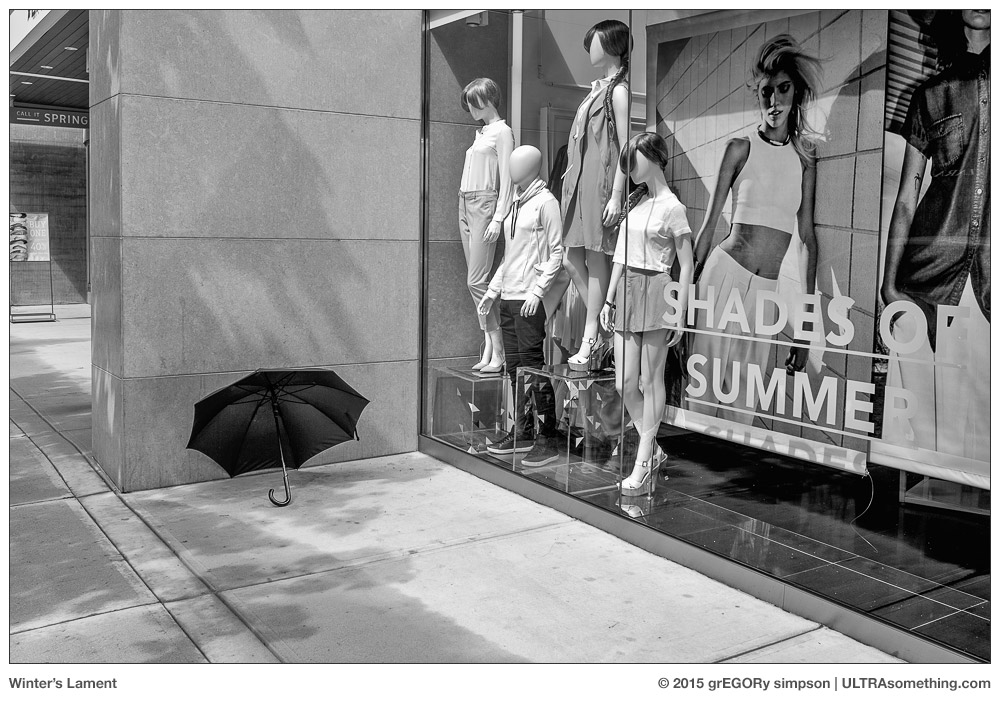
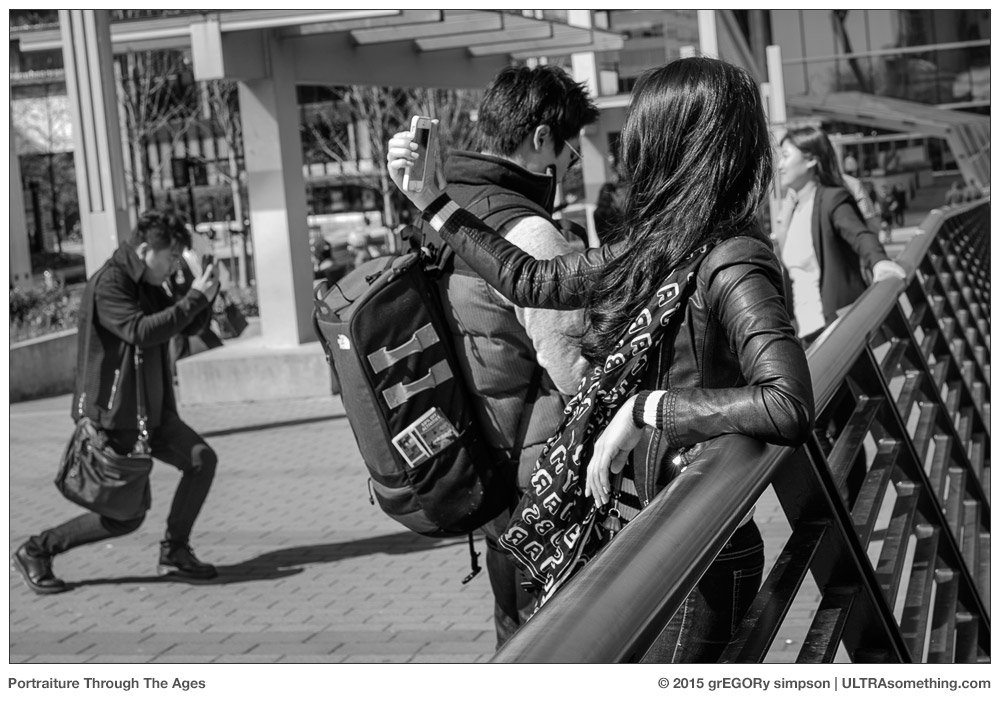
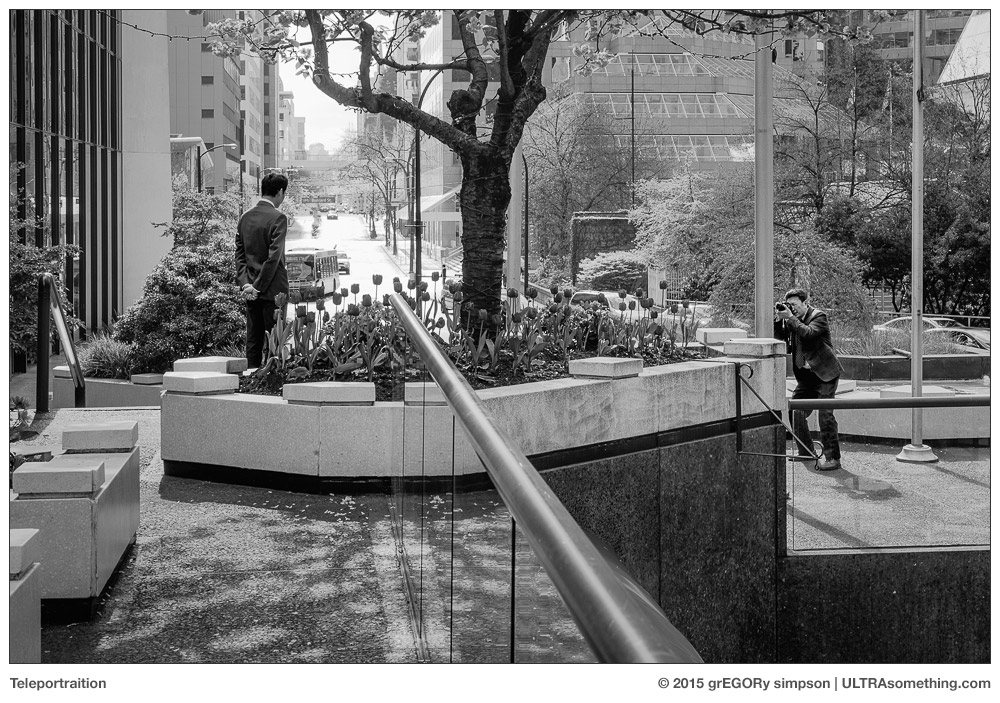
Just finished both your Pt. 1 and 2 articles. I really appreciate your straight forward style. You have given me a lot to think about. Not only about the M246 (which I think I like very much), but also about my own approach toward photography. I’m certainly not a professional; I guess you would call me an “advanced amateur”. Regardless of definition, I enjoy taking all kinds of pictures: mostly family and landscapes.
Bottom line, I’m a new reader of yours and appreciate the good work you do. It’s obvious you put a lot of time and effort into your articles and it shows. Keep up the good work. It is very helpful to those of us who need solid information and guidance.
I am so impressed with the quality of lighting and focus of your pictures, I wonder if you would tell me the settings you used, for example, on picture #14 Teleportraition? I would really appreciate it.
Was going to follow-up on this one:
….So with Question #1 definitively answered, I have now moved on to question #2: “Am I willing to give up X, Y and Z in order to gain that advantage?”
…any conclusions on your part?
Thanks,
Mark
Mark: The answer was a definitive YES. Once I mailed the prototype M246 back to Leica, and returned to shooting with my existing digital gear, I saw an immediate drop-off in my “success rate.” I decided that missing shots was simply not as good an option as selling other stuff (and giving up certain things entirely). I would guess about 75% of the photos that accompany the remainder of 2015’s blog entries were all shot with the M246 that I purchased. The exceptions to the M246 being film shots (I will never give up film — I consider it an entirely different medium than digital) and the occasional Ricoh GR snap (a camera I carry whenever I decide “not to carry a camera.”)
Note that my decision (and rationale) applies to me and me only — for the way I shoot, the M246 is simply a huge step forward. For other people, it might not be. It all depends on the type of photographs you want to take and what your demands are for those photos. I’ll readily admit that mine aren’t exactly “typical.”
Hi GrEGORy.
I thoroughly enjoyed your articles on the Monochrom. I’ve been tempted to get into digital Leicas, and your down-to-earth style and philosophy gels with mine. Now to find the Xs, Ys, and/or Zs to sacrifice at the altar of the M240/M246!
Raj 🙂
Went back to read some of your older blogs. Reading about Leica Monochroms. I have wound up owning two of them. One now for sale (246). Of course they are wasted on me, as on you, terrible photographer that you are.
Enjoyed your comments about half-frame film cameras. I have some slides taken in 1976, with an Olympus Pen F. Fuzzy they are, and faded as will Ektachrome. But I enjoy them, every 12 or so years when I drag them out. Now wherever is my Carousel?